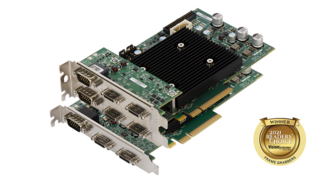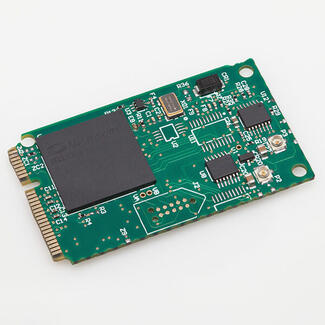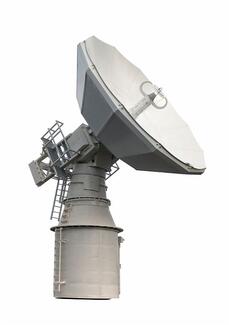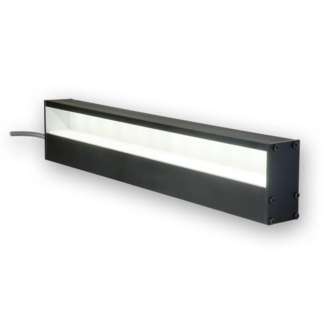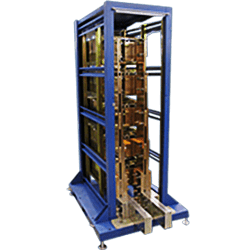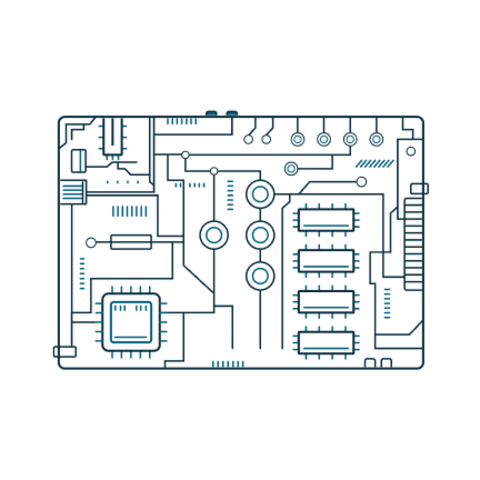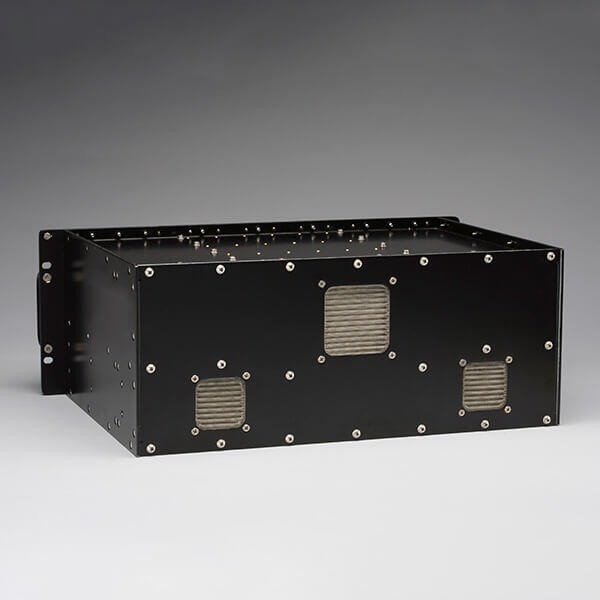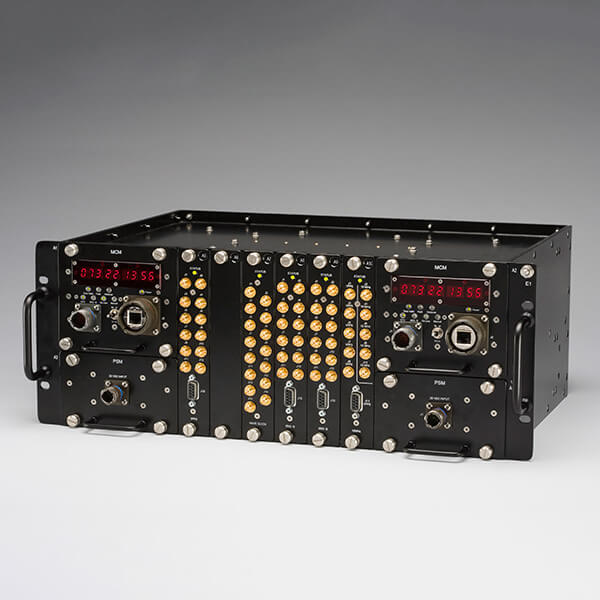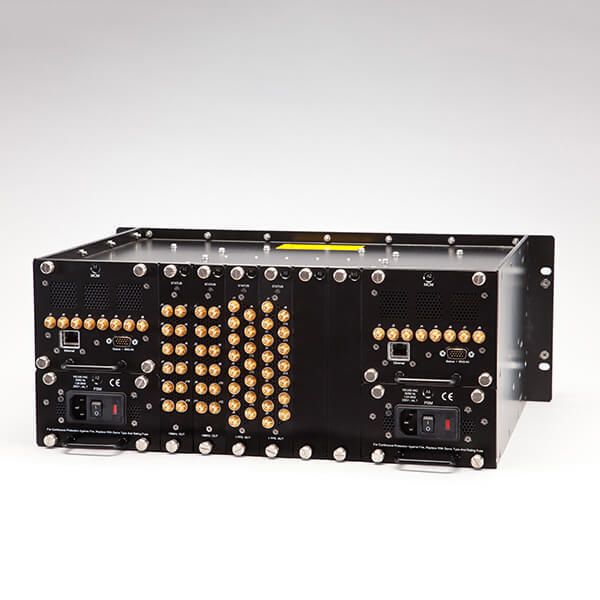Brandywine - HPTS High Performance Timing System
- Modular Timing System
- Flexible
- Upgradeable
- Redundant
- Hot Swappable Modules
- High Accuracy
- Network-Centric
- Rugged
- Environmentally Qualified
- Automatic Propagation Delay Compensation
- Flexible input reference – GPS, Have Quick, IRIG B
Brandywine Communications High Performance Timing System is the most accurate frequency system currently available, with inherent 10ns accuracy. This next generation, dual redundant, network-centric, modular timing system includes a novel architecture that allows automatic compensation of propagation delay. The HPTS also offers a range of rubidium options including cesium clocks to ensure the highest accuracy of your timing system. Input synchronization sources include GPS, external SAASM or M-Code GPS, Have Quick, 1PPS, IRIG A, IRIG B, IRIG G, 10MHz, and NTP. Outputs include Have Quick, 1PPS, IRIG A, IRIG B, IRIG G, 10MHz, and NTP. The HPTS is ruggedized and fully qualified for airborne, shipboard, and land mobile applications.
Brandywine has used the HPTS as the main master clock for many time and frequency systems for military applications. The HPTS coupled with the PTS-SAASM provides the critical timing accuracy needed for many applications.
The HPTS is able to function as a master clock to create custom systems requiring crucial timing accuracy. Brandywine won the subcontract to build the master timing system, the Frequency and Time Subsystem (FTSS) for the advanced satellite terminals under the U.S. Army’s Modernization of Enterprise Terminals (MET) program.
The HPTS receives a basic input reference from a GPS receiver, or external source and, in turn supplies a variety of time and frequency signals in a wide variety of available formats. The unit is a ruggedized system specified to provide full performance over a wide range of environmental conditions.
A unique design feature of the HPTS enables it to distribute time reference signals over a wide area, while providing automatic compensation for propagation delays. The HPTS has been designed from the outset as a “network centric” product. All features and functions can be monitored and controlled by means of an Ethernet interface.
Two Master Clock Modules (MCM), each utilizing a rubidium or ovenized quartz oscillator, are used to provide redundant time base information for synchronization and system operation. The subsystem components are connected to a backplane bus built into the systems chassis. Output signals are a variety of low voltage analog and digital type signals such as 10MHz, 1PPS, Have Quick and IRIG Time Code.
System Accuracy
|
MCM Timing Accuracy when locked to Input Reference |
|
|---|---|
|
External Have Quick / 1PPS |
<15ns |
|
1IRIG B (Modulated) |
<2µsec |
|
GPS (calibrated antenna cable delay) |
<50ns |
|
MCM Frequency Accuracy (24hr avg.) |
|
|
Rubidium Oscillator Option |
<1x10-12 when locked to input reference <5x10-11 after 24 hr. holdover |
|
Ovenized Quartz Oscillator Option |
<1x10-12 when locked to input reference <2x10-10 after 24 hr. holdover |
Short Term Stability at 10 MHz Output
|
1 sec |
<1x10-11 |
|---|---|
|
10 sec |
<1x10-11 |
|
100 sec |
<1x10-10 |
Output Signal Module Accuracy with respect to MCM
|
1PPS |
Main Chassis: +/- 5ns Remote Location (<2km): +/- 20ns |
|---|---|
|
Have Quick |
Main Chassis: +/- 5ns Remote Location (<2km): +/- 20ns |
|
IRIB B124 |
Main Chassis: +/- 250ns Remote Location (<2km): +/- 250ns |
|
IRIG B DC |
Main Chassis: +/- 40ns Remote Location (<2km): +/- 60ns |
Physical
|
Dimensions |
19"W x 7"H (5RU) x 12" D |
|---|---|
|
Weight |
24 lb. nominal |
Environmental
|
Temperature |
|
|---|---|
|
Operating |
-10 to +50°C |
|
Emergency Operating |
70°C 5 minutes without damage |
|
Storage |
-40 to +85°C |
|
Humidity |
5% to 95% non condensing |
|
Altitude |
Operating: -1500 to +11000 ft Non-Operating: -1500 to +41000 ft |
